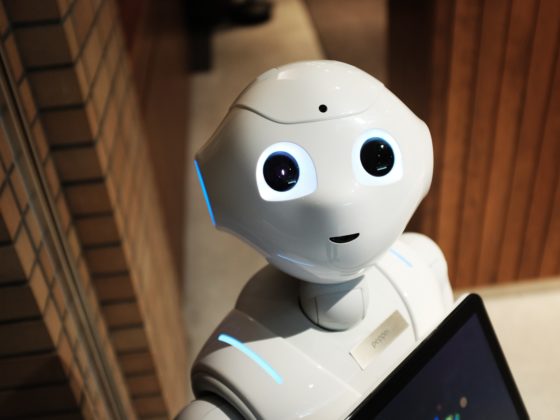While organizations have long relied on e-learning systems (LMSs), there’s a growing acknowledgment of the necessity for a richer and broader learning landscape. In recent years, e-learning has seen numerous advancements, evolving into a more tailored experience. Enter Learning Experience Platform (LXP), the cornerstone of this new learning paradigm, which is swiftly gaining traction in the educational realm. In this Journal entry, we’ll delve into LXPs essence, mechanics, and how they intricately tailor the learning journey.
What is a Learning Experience Platform?
LXPs try to tackle the perceived limitations of conventional e-learning systems in pracatice. While traditional setups tend to prioritize the viewpoints of trainers and administrators, LXPs pivot towards the needs of learners themselves. They usher in a shift from a top-down teaching approach to one that champions independent, learner-driven styles.
These platforms elevate the learning experience by fusing materials from various sources, often leveraging artificial intelligence (AI), and accessible via desktop or mobile apps. From third-party blog posts to publicly available videos and podcasts, LXPs curate a diverse array of content. While the user interface of traditional e-learning systems may feel dated, LXPs sport interfaces reminiscent of popular social networking platforms.
Through AI, LXPs offer personalized learning paths tailored to users’ past activities, objectives, and preferred learning styles. They’re adept at proactively identifying learning gaps and devising strategies to address them. Additionally, LXPs foster social learning by facilitating connections with peers and experts, akin to social networking sites. Users also have the freedom to create and share their own content, further enriching the learning ecosystem.

Bite-sized Learning: Easily Digestible E-learning Bites
Bite-sized learning modules are information items that can be used independently. They last a few minutes and focus on a single learning objective. Find out exactly what bite-sized learning is, how it works and how to get started!
Read more!LXP or LMS
In an LMS, course structures are typically dictated by the learning facilitators, leaving learners with minimal control over content or sequence. LXP flips the script, democratizing the learning journey and empowering end-users with nearly total control. Here, employees can set their own objectives and chart their learning trajectory. While LMS confines learning within a predetermined curriculum, LXP grants learners the freedom to delve deeper and explore.
To put it simply, traditional e-learning platforms resemble a canteen offering limited choices from a fixed menu. In contrast, a learning experience platform is akin to strolling through a bustling marketplace: you have a plethora of captivating learning experiences to choose from, each offering a unique path to achieving your goals.
| Traditional E-learning System | Standard Learning Experience Platform | |
| Content Consumption Mode | An administrator-centred approach. Learning paths are built in advance. | Learner-driven model. Content is organically searchable and consumable. |
| Curriculum Breakdown |
The courses are usually detailed and longer. | It is usually presented in a microlearning approach. |
| Learning Objectives | The courses are time-bound and linked to specific learning indicators. | Continuous learning, where users pursue open-ended and flexible goals. |
| Curriculum Structure |
The course catalogues are metadata-tagged by category. | Artificial intelligence recommends content based on the learner’s skills or other learners’ choices and assessments. |

The Benefits of Learning Experience Platforms
Personalised Learning Pathways
Learning experience platforms leverage machine learning and artificial intelligence to customize training content through recommendations. This approach ensures that both the content and its presentation align closely with the learning objectives. Additionally, LXPs offer the flexibility for users to manually refine the training recommendations provided to them.
Similar to streaming services, LXPs consider each learner’s unique circumstances and requirements to deliver pertinent learning opportunities. Rather than mandating completion of specific content, the system suggests material likely to pique learners’ interest and prove beneficial to their development.
Flexible Learning
Traditional e-learning often demands a pre-planned process: learners might need to set aside several hours to finish an online course. However, it’s common for individuals to struggle with dedicating extensive blocks of time consistently. Therefore, delivering course material in flexible, smaller chunks can prove far more effective. Learning experience platforms streamline the use of microlearning or bite-sized learning approaches, enabling learners to absorb content in manageable increments.
How LXPs Work?
The key behind LXPs is the mechanism that provides recommendations to end users. Let’s briefly summarise how this can work.

Skills-based Recommendation
The skills-based recommendation model is the most common among LXPs. This model provides recommendations based on the user’s skill level and job profile. In this case, content and courses are labelled with different ‘skills’ or ‘competences’. These labels are linked to specific job roles or development pathways, allowing the system to recommend learning programmes linked to the learner’s career path or job profile.

Usage Recommendation
LXPs frequently have a usage-based model to generate recommendations. User activity is collected and analysed, and algorithms use this data to understand the unique behaviour patterns and interests of each user. The LXP can then recommend content based on a learner’s viewing history, reviews from similar learners or activity data from the wider user base.

AI-based Content Analysis
The most advanced LXPs, driven by artificial intelligence, use a sophisticated recommendation system based on machine learning. The software scans the content and performs an in-depth analysis of the material, and machine learning helps the system to deduce which content is most appropriate for each learner. Over time, it can make increasingly intelligent recommendations based on relevant data patterns.

Shaping the Future: AI in Education
What’s the role of artificial intelligence in education? What self-directed, AI-based options are available in e-learning today? In this Journal entry, our colleague Petra Takács explores practical examples to demonstrate that the future of education is already here.
Read More!Key Features of Learning Experience Platforms
LXPs support user-generated content. Learners can craft entries and lessons, enriched with links, images, videos, and documents.
LXPs provide machine learning services to select and organise third-party content discovered on the internet and provide personalised recommendations to users. In addition, users can manually sort internal and third-party content to share with other learners.
LXPs collect and store usage and learning data, which is displayed on dashboards and reports used by learners and learning managers. Dashboards help learners track progress towards goals and administrators understand learning and usage trends on the platform.
Some LXPs also include artificial intelligence-based chatbots that are available to users 24 hours a day, 7 days a week. The chatbots can help users complete their current tasks and suggest where to continue learning.
LXPs also use gamification to encourage learner engagement. Learn more about gamification in this Journal entry.
API integration allows LXP to connect to third-party business applications used by the company, such as tools for communication, cloud storage, document management or CRM and ERP.
You Need Help?
If you would like to explore LXPs, but you are not sure whether it is worth starting, contact us and we will help you choose the best solution. Don’t hesitate, even if resources are limited, as expert assistance can lead to significant savings in both time and costs!
If you found this article useful, follow us on Facebook or LinkedIn, to keep up with the latest articles!
Details below will help you contact us via form, phone or e-mail. ⬇️
Who Are We?
We are digital education experts and software developers, following trends and offering innovative solutions in our learning materials and systems. We have been providing digital training, creating complex e-learning materials and implementing systems for X years.
Klippe Learning’s team will create the digital teaching and learning solution you’ve been dreaming of – or we’ll dream it for you if you don’t know exactly what you need. Custom content, creative and motivating methods, a platform tailored to you.
How Can You Reach Us?
To find out more about our bespoke learning materials, e-learning systems, training courses or to request a quote, please contact us:
 contact us via the form on the right!
contact us via the form on the right!
 or call us:
or call us:
 or send an email:
or send an email:



